
Fundamentals
The concept of occlusive properties refers to the capacity of certain substances to form a physical barrier on a surface, significantly reducing the escape of moisture. This function is particularly meaningful in the realm of hair care, where maintaining hydration is paramount, especially for textured hair. When applied to hair, occlusive agents create a protective seal, holding water within the hair shaft and guarding against environmental factors that could lead to dryness. This understanding is foundational to many hair care practices, both ancient and contemporary, aimed at preserving hair health and vitality.
For textured hair, the lipid layer, a natural barrier composed primarily of fatty acids, ceramides, and cholesterol, plays a critical role in preventing moisture loss. This lipid layer, located in the hair cuticle, seals the cuticle scales, which helps with water retention and also protects against external elements. When this natural barrier is compromised, hair becomes more susceptible to dryness, brittleness, and breakage. Therefore, the application of external occlusive substances supports and augments the hair’s inherent ability to maintain its moisture balance.
Occlusive properties describe a substance’s ability to create a moisture-sealing barrier, an essential function for maintaining hair hydration, particularly in textured hair.
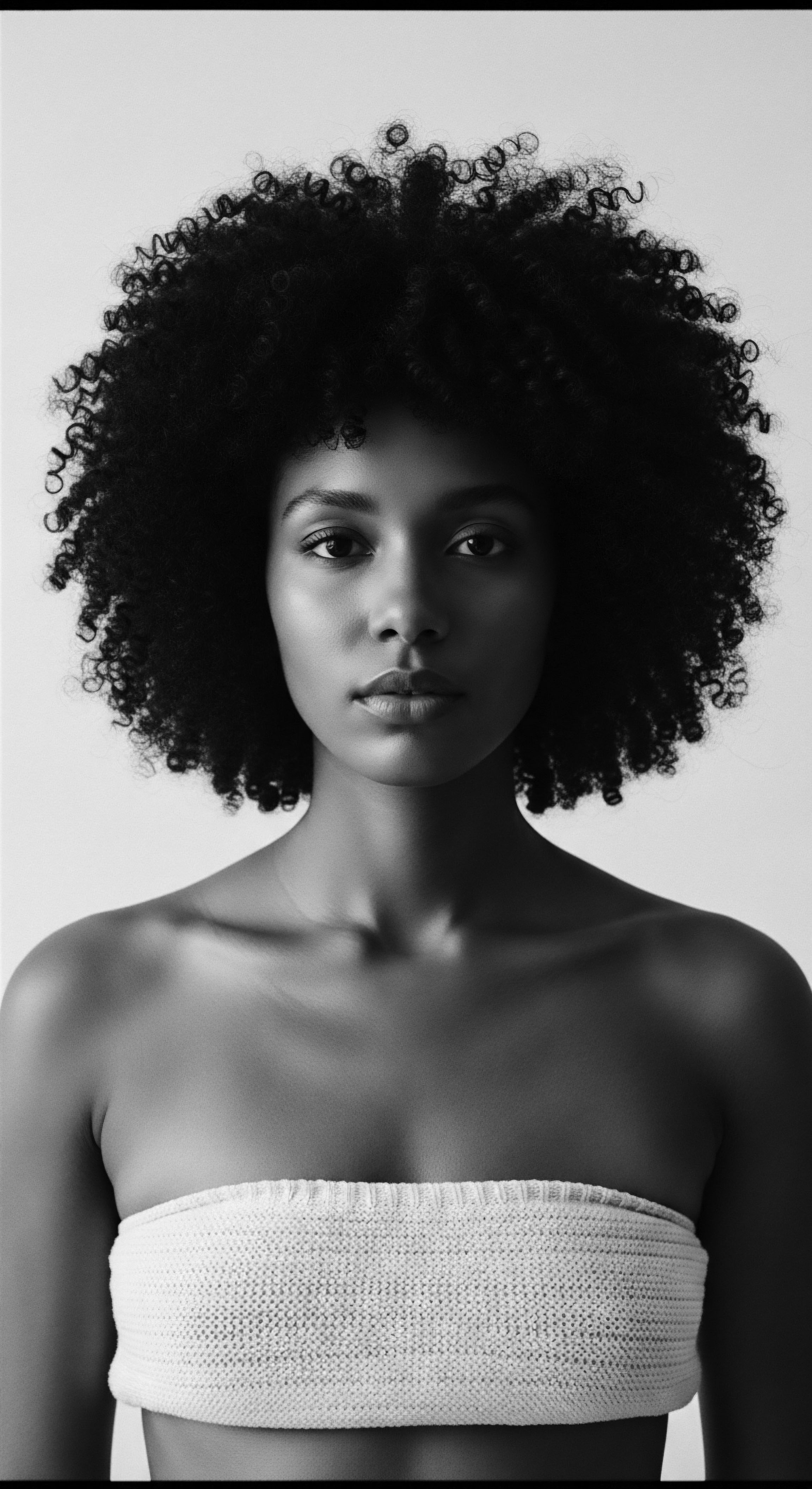
Elemental Aspects of Occlusion for Hair
At its most basic, occlusion in hair care works by minimizing transepidermal water loss (TEWL) from the hair shaft. Hair, much like skin, naturally loses water to the atmosphere. For hair that exhibits coily or curly textures, this water loss is often more pronounced due to the unique structural characteristics of the hair strand.
The spiral or wavy shape of textured hair can extend its surface area compared to straight hair, which can increase water evaporation. Additionally, sebum, the natural oil produced by the scalp, may not travel down the entire length of a tightly coiled strand as effectively as it would on straight hair, leaving the ends particularly vulnerable to dryness.
- Hair Cuticle Integrity ❉ The outermost layer of each hair strand, the cuticle, comprises overlapping scales. When these scales lie flat, they create a smooth surface that helps trap moisture. Occlusive agents work by essentially forming a protective film over these cuticles, reinforcing their natural sealing action.
- Reduction of Evaporation ❉ By forming a physical seal, occlusive substances reduce the rate at which water molecules evaporate from the hair. This is especially important in arid climates or environments with low humidity, where moisture can rapidly escape hair strands.
- Protection from External Stressors ❉ A well-formed occlusive barrier offers a shield against various environmental aggressors, including wind, dry air, and pollutants, all of which can strip hair of its essential moisture. This protective quality extends to mitigating damage from mechanical abrasion and certain chemical treatments.

Intermediate
Moving beyond the basic explanation, the meaning of occlusive properties deepens when considering the intrinsic characteristics of textured hair and the historical methods developed for its care. The natural structure of Black and mixed-race hair, with its unique curl patterns ranging from waves to tight coils, often means that it is inherently more susceptible to dryness than straighter hair types. This increased propensity for dryness is a significant factor in shaping ancestral hair care practices and the evolution of care rituals across the diaspora.
Sebaceous glands on the scalp produce sebum, a natural oil that typically lubricates the hair shaft. However, in tightly curled hair, the path of this sebum from the scalp along the length of the strand is more challenging. As a result, moisture struggles to travel down the hair shaft, leaving the ends, especially, prone to dehydration. This biological reality underscores why occlusive practices have been so central to maintaining hair health within communities with textured hair heritage.

The Ancestral Wisdom of Moisture Sealing
Ancestral practices from various African communities and throughout the diaspora reflect a deep, intuitive understanding of occlusive properties, long before scientific terminology came into being. Communities relied on readily available natural resources to create protective balms and salves. These historical methods were not merely about aesthetics; they were crucial for hair survival, promoting length retention, and maintaining the hair’s resilience in diverse climates.
A powerful example is the traditional use of shea butter, often referred to as “women’s gold,” in West Africa. For centuries, women have manually processed shea nuts to extract this rich, emollient butter. This laborious, generational process creates a substance replete with essential fatty acids, offering unparalleled moisturizing benefits for both skin and hair.
The application of shea butter to hair created a substantive barrier, preventing moisture loss, conditioning the strands, and offering a degree of protection from environmental elements. The practices surrounding shea butter extraction and application were deeply communal, reinforcing social bonds and transmitting ancestral wisdom from elder to youth.
| Traditional Occlusive Agent Shea Butter (Vitellaria paradoxa) |
| Origin & Cultural Context West Africa, particularly countries like Ghana, Mali, Burkina Faso. Often processed by women, a central part of local economies. |
| Hair Care Significance & Properties Rich in fatty acids and vitamins A, E, F; creates a protective film, seals moisture, softens hair, and supports scalp health. Used for centuries to protect hair from harsh climates. |
| Traditional Occlusive Agent Cocoa Butter (Theobroma cacao) |
| Origin & Cultural Context West Africa and South America. Historically used for skin and hair care. |
| Hair Care Significance & Properties Contains fatty acids (stearic, palmitic acid) that nourish and reinforce hair cuticle; provides deep hydration, reduces frizz, and enhances shine. |
| Traditional Occlusive Agent Chebe Powder (from Croton Zambesicus) |
| Origin & Cultural Context Basara Tribe of Chad. Applied as an herb-infused oil/animal fat mixture, often braided into hair. |
| Hair Care Significance & Properties Known for its ability to increase hair thickness and significantly aid in length retention by sealing in moisture between washes. Possesses anti-inflammatory properties for the scalp. |
| Traditional Occlusive Agent Various Plant-Based Oils (e.g. Coconut, Olive, Castor) |
| Origin & Cultural Context Widespread across Africa and the diaspora. Often cold-pressed. |
| Hair Care Significance & Properties Some are 'penetrating' (e.g. coconut, olive) to moisturize from within, while others are 'sealing' (e.g. castor, jojoba) to lock in moisture on the surface. |
| Traditional Occlusive Agent These traditional materials exemplify the ingenuity and resourcefulness inherent in ancestral hair care, highlighting an enduring understanding of moisture retention. |
The selection of specific natural oils and butters was a practice refined through generations, demonstrating a nuanced understanding of their individual properties. Some oils, such as coconut oil, are considered penetrating, capable of entering the hair fiber to provide internal moisture. Others, like jojoba or castor oil, are recognized as sealing agents, creating that vital barrier on the surface. This distinction, though perhaps not articulated in modern scientific terms, reflects a profound practical knowledge passed down through lived experience.
The history of hair care in the African diaspora is marked by remarkable adaptability and resilience. During periods of enslavement, access to traditional ingredients and tools was severely limited. Yet, Black individuals ingeniously adapted, utilizing whatever was available—even substances like lard or butter—to condition and protect their hair, continuing the ancestral imperative of moisture preservation. This speaks volumes about the deep cultural importance of hair and the innate drive to care for it, despite oppressive circumstances.
Ancestral hair care rituals, such as the use of shea butter, reveal a timeless, inherited understanding of occlusive properties for preserving textured hair’s hydration and strength.
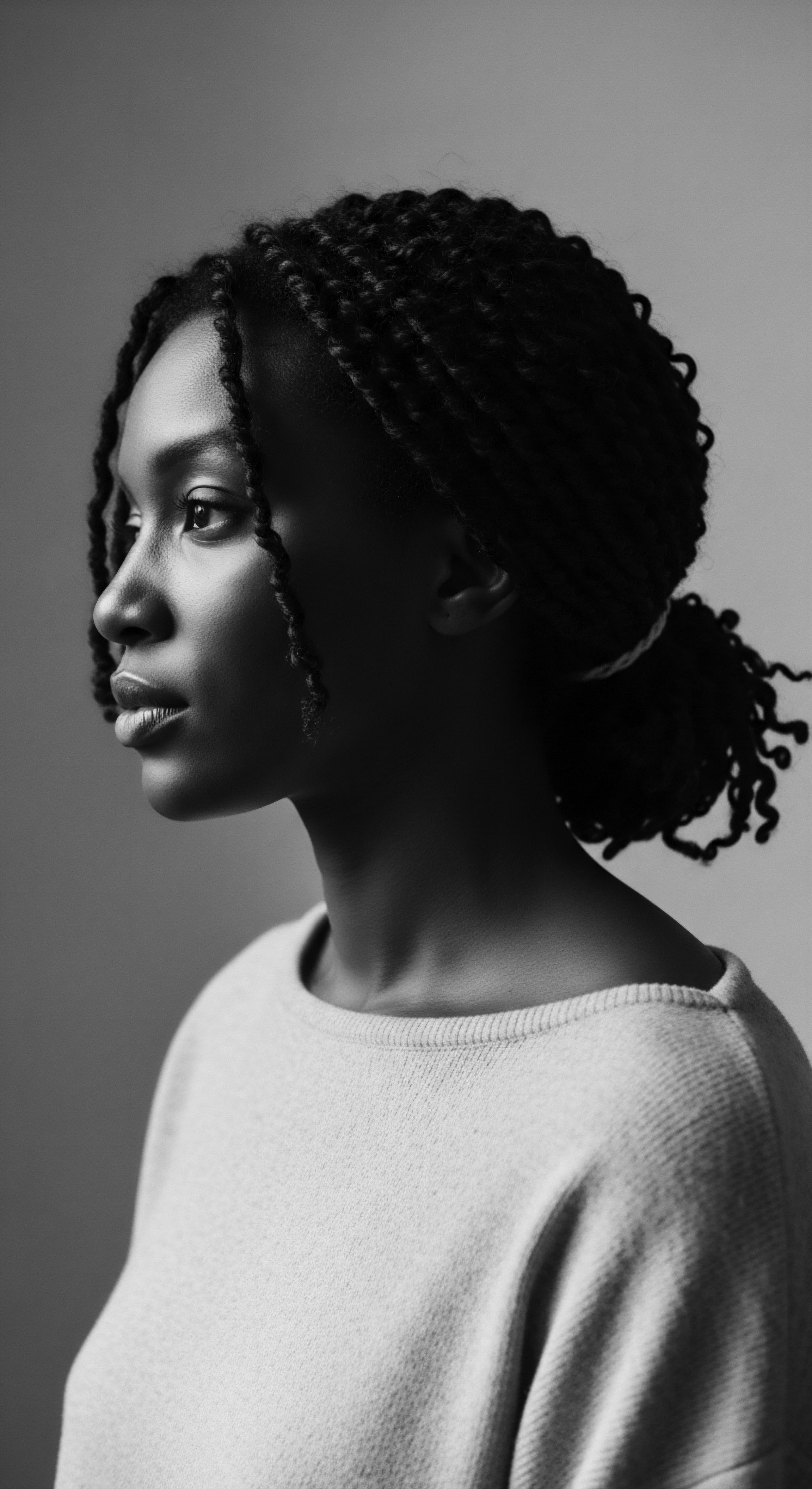
Impact on Textured Hair Health
The benefits of occlusive practices for textured hair are evident in improved hair health and manageability. By minimizing the constant evaporation of water, occlusive agents help prevent dryness, frizz, and breakage—common concerns for those with curly and coily strands. This approach supports the hair’s elasticity and overall resilience, allowing it to withstand manipulation and environmental stresses more effectively.
The continuous application of these substances over time also contributes to length retention, a deeply cherished aspect of textured hair care. When hair is well-moisturized and protected, it experiences less breakage, allowing the hair to grow longer and stronger. This outcome is not merely cosmetic; it is a visible representation of care, patience, and the continuation of practices rooted in heritage.

Academic
The meaning of occlusive properties, within a rigorous academic framework, refers to the demonstrable capacity of a substance to form a non-permeable or semi-permeable film upon a surface, thereby inhibiting the transmission of substances, most critically water, across that barrier. In the context of hair science, this delineation extends to materials that reduce transepidermal water loss (TEWL) from the hair shaft, preserving its intrinsic moisture content. This function is underpinned by the physicochemical interactions between the occlusive agent and the hair’s outermost layer, the cuticle, and its integral lipid structures.
The hair cuticle, comprised of overlapping keratinized cells, possesses a natural lipid layer that acts as a primary defense against moisture egress and external insult. This lipid layer, primarily composed of fatty acids such as 18-methyleicosanoic acid (18-MEA), ceramides, and cholesterol, is pivotal in regulating hair hydration and maintaining its structural integrity. Damage to this lipid barrier, whether through environmental exposure, chemical treatments, or routine washing with surfactants, compromises its protective function, leading to increased water loss and susceptibility to damage.
Occlusive agents, therefore, function as exogenous reinforcements to this natural barrier. They act by physically coating the hair strand, thereby creating a supplementary hydrophobic film that limits water evaporation. This process is particularly relevant for textured hair, which exhibits a higher susceptibility to dryness.
Studies indicate that the unique helical structure of curly and coily hair, coupled with often diminished sebaceous gland production or inefficient distribution of natural oils along the hair shaft, contributes to elevated TEWL compared to straight hair. The consistent application of external occlusives becomes a compensatory mechanism, directly addressing this physiological predisposition.
From an academic stance, occlusive properties denote a substance’s capability to form a barrier, preventing water loss from hair, especially significant for textured hair’s unique moisture retention needs.
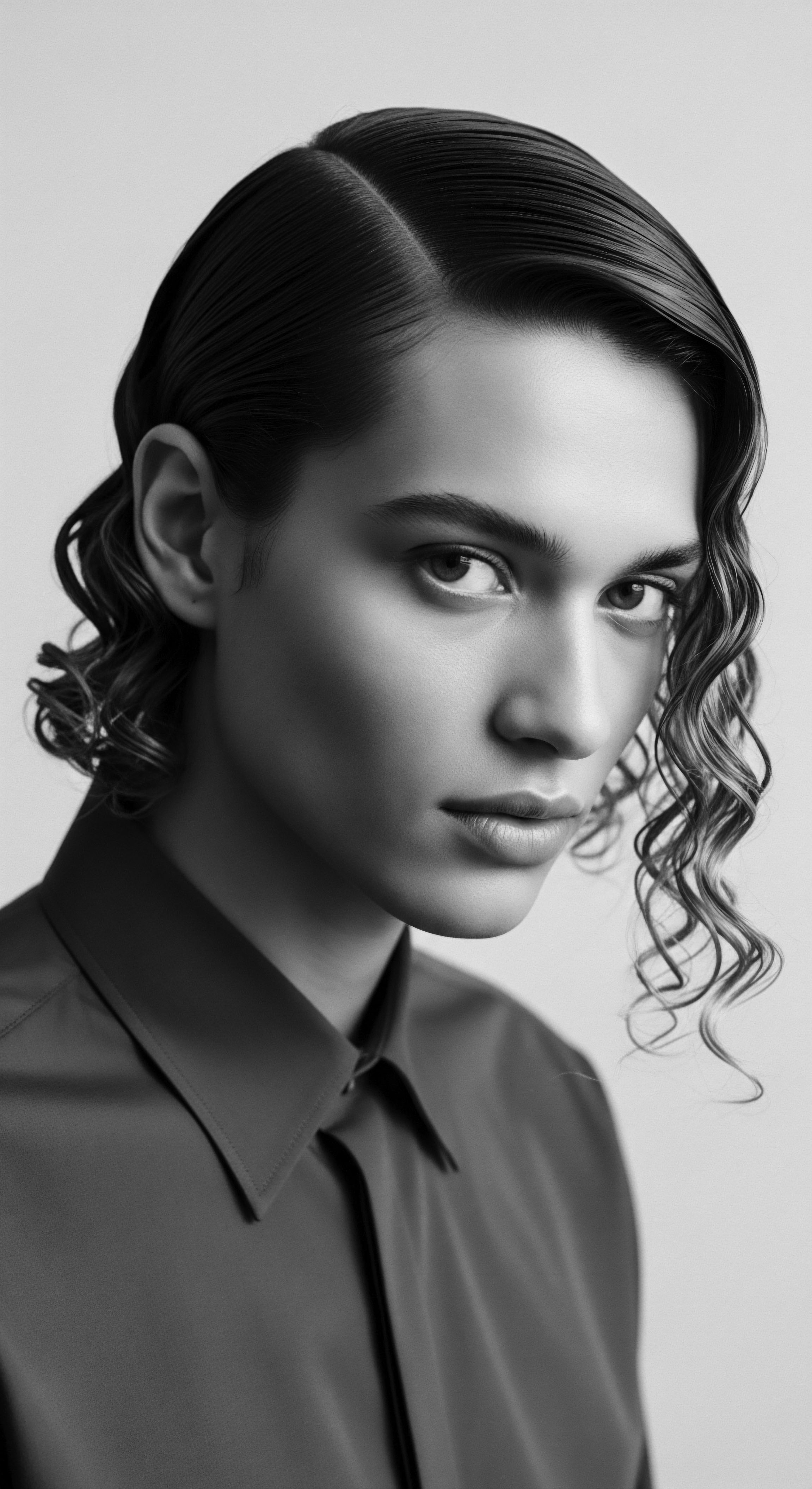
The Scientific Underpinnings of Occlusion in Textured Hair
The efficacy of occlusive agents on textured hair can be systematically examined through their interaction with the hair’s macrostructure and microstructure.
- Cuticular Sealing ❉ Occlusive compounds, often long-chain hydrocarbons, fatty acids, or waxes, deposit themselves onto the cuticle surface. This deposition fills in any raised cuticular scales, creating a smoother, more continuous outer layer. This physical smoothing reduces the surface area available for water molecules to escape, simultaneously minimizing friction between hair strands and thereby decreasing mechanical damage.
- Hydrophobic Layer Formation ❉ Many occlusive agents are inherently hydrophobic, meaning they repel water. When applied to hair, they form a water-resistant film. This film prevents external humidity from causing the hair to swell and frizz while simultaneously locking in any pre-applied moisture. This dual action is crucial for maintaining style and reducing hygral fatigue, a process where repeated swelling and drying cycles weaken the hair fiber.
- Interplay with Humectants ❉ While occlusives seal, their optimal function for hair hydration is often achieved when paired with humectants. Humectants, such as glycerin or aloe vera, attract and draw water into the hair shaft. Once this moisture is drawn in, occlusives then act to hold it within the hair, creating a synergistic effect that promotes sustained hydration. This combination of drawing in and sealing off moisture is a cornerstone of effective hair care routines for textured hair.
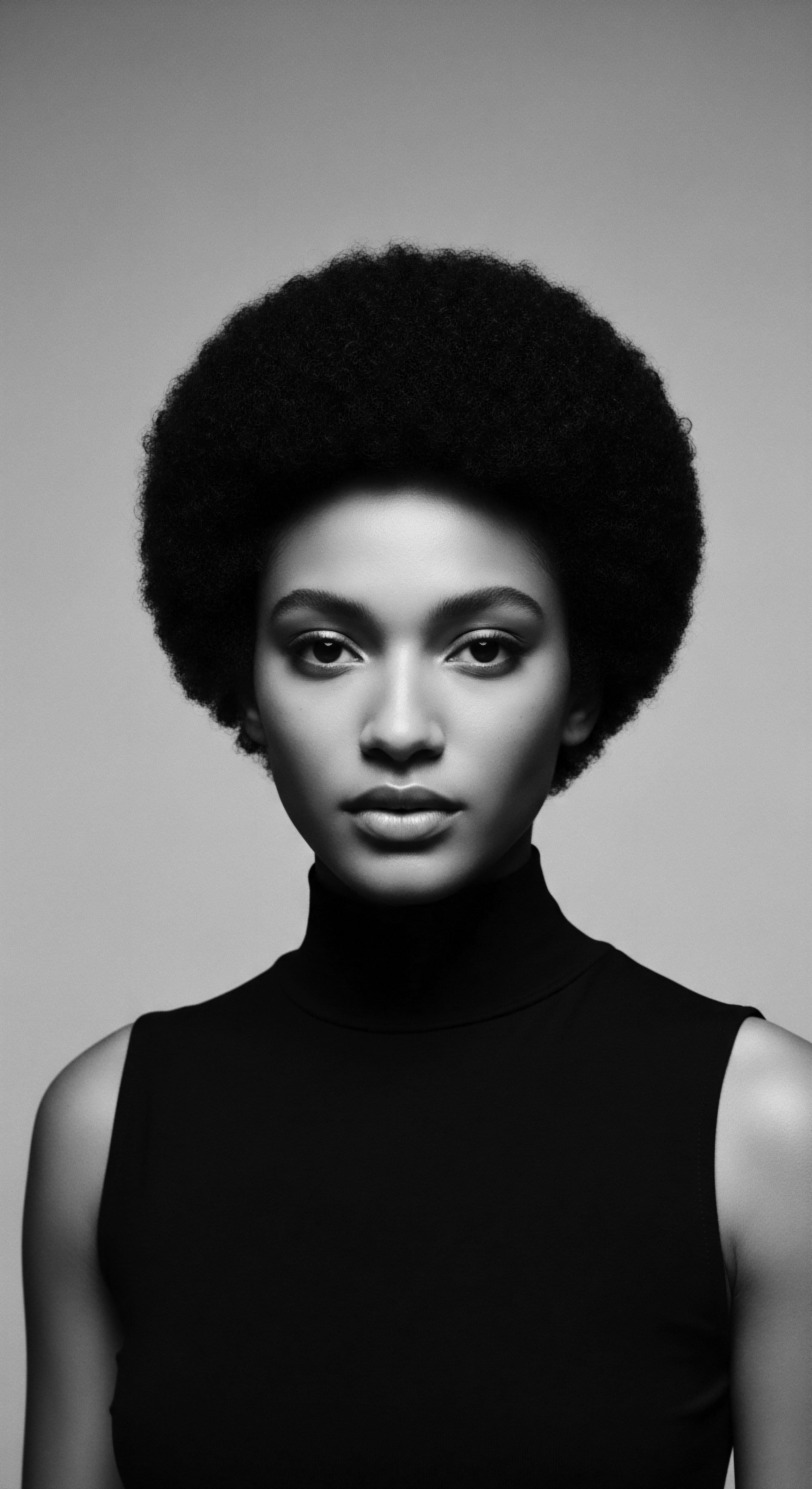
A Case Study in Historical and Contemporary Occlusive Application ❉ The Legacy of Hair Greasing
The historical practice of “hair greasing” within Black and mixed-race communities offers a compelling case study of occlusive properties in action, bridging ancestral wisdom with scientific explanation. This practice, often misunderstood or devalued in broader society, was a foundational element of Black hair care for generations, particularly in the post-slavery era.
During enslavement, and for generations after, Black individuals were systematically denied access to traditional African hair care ingredients and tools. Stripped of their cultural practices, they improvised with what was available, sometimes resorting to substances like butter, lard, or even axle grease to condition and straighten their hair. This adaptation was not about achieving Eurocentric beauty standards initially, though that pressure certainly evolved; it was a matter of survival, a desperate attempt to maintain scalp health, prevent breakage, and manage hair that was often matted and tangled due to brutal living conditions.
The emergence of commercial hair care products for Black women, spearheaded by pioneers like Madam C.J. Walker in the early 20th century, formalized this ancestral practice. Walker’s formulations, often oil-based, provided a more refined and accessible means of greasing the scalp and hair, focusing on scalp health and moisture retention. As A’Lelia Bundles notes in On Her Own Ground ❉ The Life and Times of Madam C.J.
Walker, Walker’s success was not merely about selling products, but about empowering Black women through self-care and economic independence. (Bundles, 2002) Her enterprise, built upon remedies that often contained occlusive ingredients like petroleum jelly and coconut oil, directly addressed the moisture needs of textured hair. This historical example illustrates how the essential function of occlusion—sealing in moisture—has been consistently understood and applied, even as the specific ingredients and social contexts transformed.
The enduring legacy of hair greasing and the use of occlusive products remains a point of discourse within the natural hair community. While modern natural hair movements, popularized in part by works like Lorraine Massey’s Curly Girl ❉ The Handbook, often advocate for minimal product use and avoidance of heavy oils to promote curl definition, the wisdom of ancestral practices for length retention and overall hair health continues to hold relevance. (Massey, 2001) The debate often centers on how best to balance moisture absorption with sealing to prevent dryness without causing product buildup.
A study highlighting the importance of scalp barrier function for textured hair revealed significant insights. Research indicates that consumers with textured hair are prone to scalp conditions such as scaliness, irritation, and dryness due to increased transepidermal water loss (TEWL). Compared to straight hair, the sebaceous glands in textured hair typically produce less sebum, the natural oil that lubricates the scalp and strands. This can lead to a dry, flaky scalp and discomfort.
In a 24-week study involving women with self-reported hair thinning, an AI-driven platform for customizing hair loss treatments showed remarkable improvements in scalp health. Specifically, scalp barrier function improved significantly, with transepidermal water loss reduced by 61.5% at 12 Weeks and 69% at 24 Weeks. This empirical data underscores the critical role of maintaining a robust scalp barrier, often achieved through occlusive applications, in the overall health and well-being of textured hair. This scientific validation reinforces the efficacy of practices rooted in generations of ancestral wisdom.

Reflection on the Heritage of Occlusive Properties
The journey through the meaning of occlusive properties reveals more than a scientific definition; it uncovers a profound historical narrative, a testament to the enduring ingenuity and resilience of Black and mixed-race communities. From the ancient hearths of Africa, where women intuitively understood the power of shea and cocoa butter to shield and sustain their crowning glory, to the nuanced scientific explanations of lipid barriers and transepidermal water loss, a continuous thread of care and knowledge unfolds. Hair has always been more than mere fiber; it is a living archive, a repository of identity, status, and spirit. The wisdom of applying natural oils and butters was not simply a beauty regimen; it was a deeply practical response to environmental realities and a cultural expression of self-preservation.
The experiences of the African diaspora further deepen this understanding. In the face of brutal dehumanization during enslavement, when hair was often shorn or neglected, the clandestine acts of “greasing” hair, even with rudimentary substances, represented quiet defiance and a fierce determination to maintain a connection to self and heritage. This enduring practice, later formalized by visionaries like Madam C.J.
Walker, cemented the practical application of occlusive principles into the very fabric of Black hair care. What began as an elemental need for moisture retention became a symbol of economic independence and cultural affirmation.
Today, as conversations around natural hair continue to evolve, the concept of occlusion stands as a bridge between ancestral wisdom and modern scientific understanding. The textures that define Black and mixed-race hair, often celebrated for their unique beauty and complexity, also demand a particular vigilance against dryness. Understanding occlusive properties allows us to honor the methods of our foremothers while integrating contemporary knowledge to cultivate thriving, resilient hair. This convergence reminds us that true hair wellness extends beyond mere product application; it embraces the deep currents of history, identity, and shared heritage, allowing each strand to tell its sacred, unbound story.
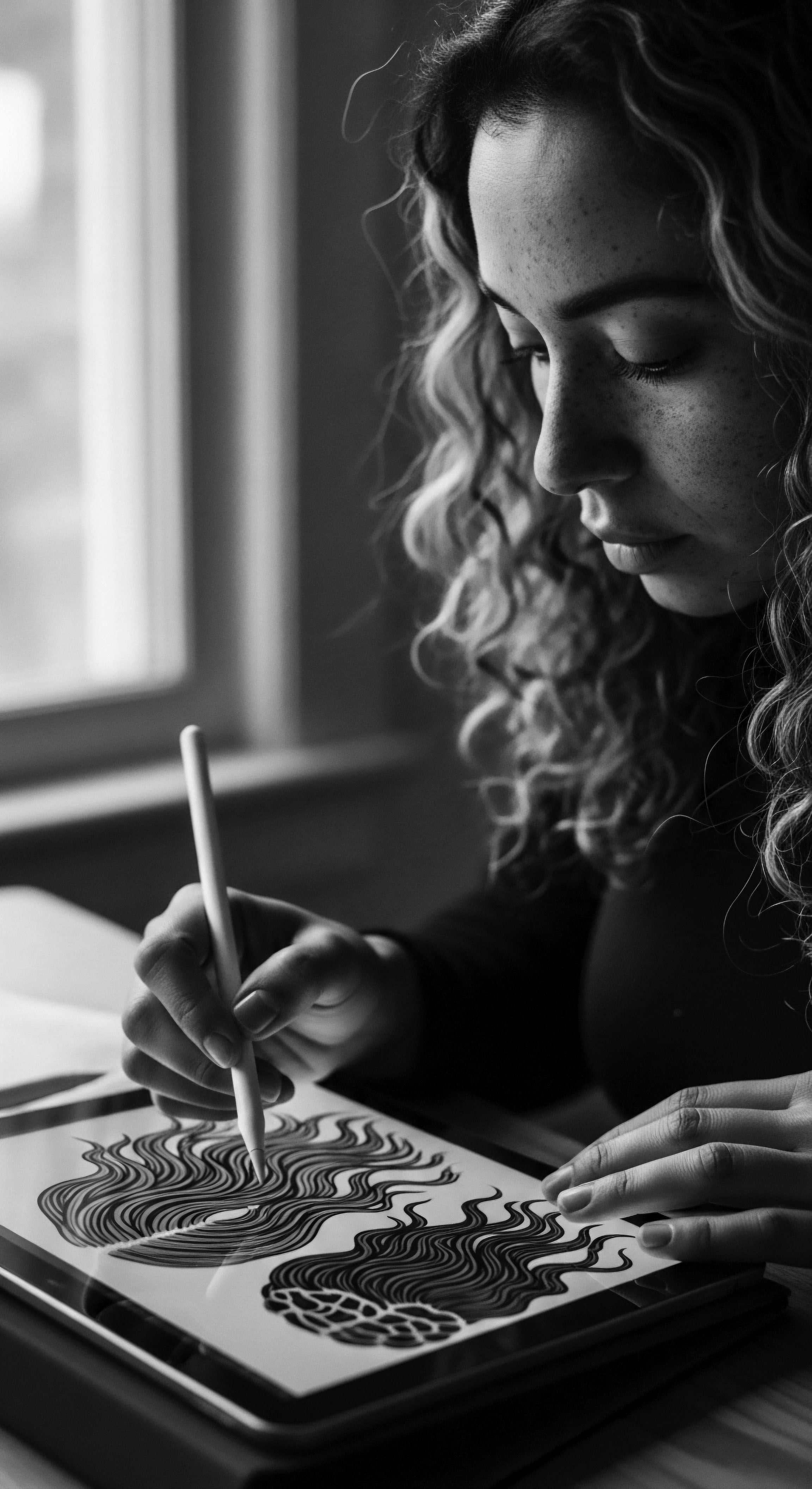
References
- A’Lelia Bundles, On Her Own Ground ❉ The Life and Times of Madam C.J. Walker, Scribner, 2002.
- Lorraine Massey, Curly Girl ❉ The Handbook, Workman Publishing, 2001.
- Blay, Y. (2021). One Drop ❉ Shifting the Lens on Race. Zea Books.
- Croda Beauty. (2025). Advancing the future of textured hair solutions.
- Spreading Clean Beauty. (n.d.). Lipid layer ❉ what it is, its function and how to take care of it.
- MDPI. (2023). Hair Lipid Structure ❉ Effect of Surfactants.
- Cheribe Beauty. (n.d.). The 8 Best Oils for Afro Hair Care.
- Healthline. (2018). Shea Butter for Hair ❉ Raw, Hair Growth, and Natural Hair.
- 100% Pure. (n.d.). How to Use Raw Cocoa Butter for Face and Hair.
- Ecosystem Laboratoire. (2024). The benefits of natural butters ❉ shea, cocoa!
- Afriklens. (2024). Natural African Haircare ❉ Celebrating the Afro and Braids.
- Afriklens. (2024). African Hairstyles ❉ Cultural Significance and Legacy.
- SEVICH. (n.d.). Natural Hair Care ❉ Understanding Chebe Powder and Chebe Oil.
- Clinikally. (2023). What is Transepidermal Water Loss and How Does it Affect Your Skin?.
- ReachMD. (2025). Study ❉ AI Model Improves Hair Growth, Texture.
